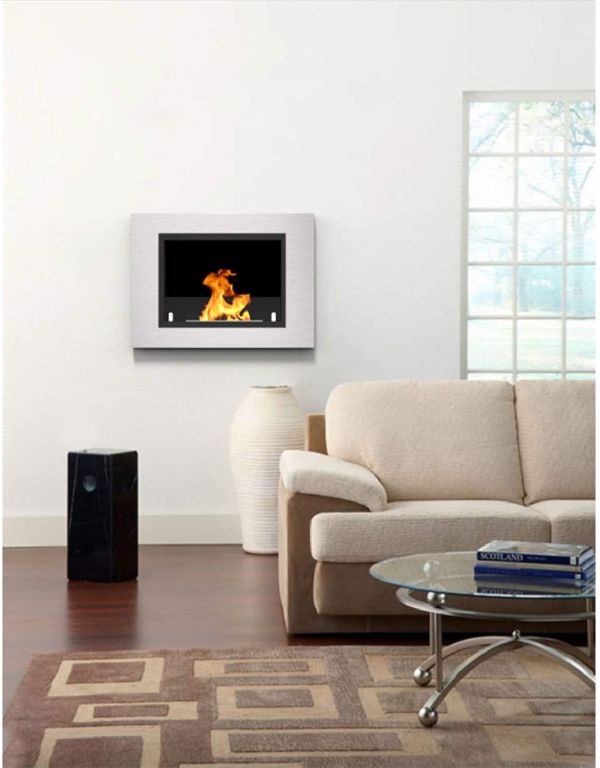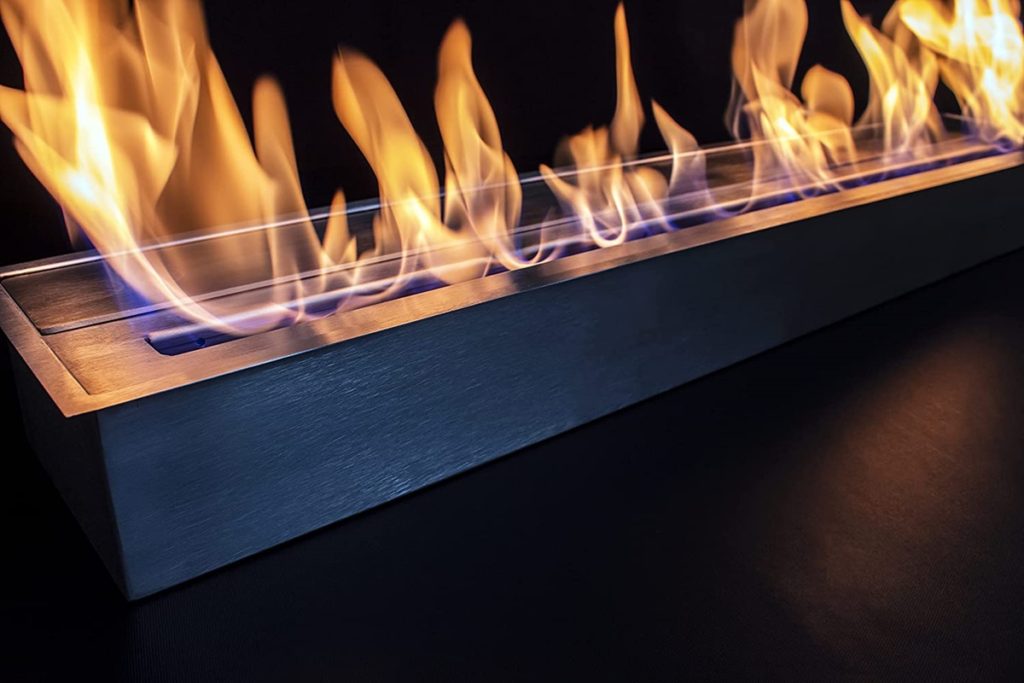When shopping for a new fireplace, you’re likely to hear a variety of new terms that you may not have seen before. One of these is the concept of ventless fireplaces or vented gas fireplaces. These fireplaces have plenty of unique advantages, but they also aren’t going to be right for every home.
Here’s a look at how ventless fireplaces work and how you can use them in your space.
What are Ventless Fireplaces?
Ventless fireplaces are a specific type of gas fireplace. As the name suggests, they do not have a flue or any other kind of vent, which means they produce a lot of heat. Many people seek them out for this reason.
Vented gas fireplaces need to be attached to a natural gas or propane line in order to work properly. To generate fire, there is a small tube where oxygen can get inside. When the oxygen mixes with the gas, it combusts. Instead of using real logs, a ventless gas fireplace has fireproof stones or faux logs, which mimic the look of a natural wood-burning fireplace. The exterior is made from a durable fireproof material like ceramic or fiberglass which makes ventless gas fireplaces safe.
Even if you have a traditional wood-burning fireplace at home, you can actually convert it into a ventless fireplace. To do this, you will need to have a professional plumber come and connect the ventless fireplace to your natural gas line.
Once the ventless fireplace has been installed, you can turn it on and off using a remote control. You won’t need to maintain the logs or add fuel to the fire because it is connected to the gas line.

What are the Benefits of Ventless Fireplaces?
Ventless fireplaces have some unique benefits. The biggest benefit of using a ventless fireplace is that it generates a lot of heat. Many people seek out these types of fireplaces in cold climates because they are so warm. Because there is no vent, the heat isn’t released anywhere and stays concentrated.
Many people also like direct vent gas fireplaces in general because they are easier to maintain than wood-burning fireplaces. While the installation process can take some time, there is virtually no maintenance once you start using it. You can turn the vent free fireplace on and off with a switch, so you don’t have to worry about tending the fire or putting it out manually. You also won’t have to worry about cleaning a chimney compared to a traditional vented gas fireplace.
Finally, gas fireplaces are clean-burning and don’t have toxic emissions. Many people worry about air quality when putting in a new fireplace. Using a ventless fireplace means that you won’t have to worry about smoke, ash, or carcinogens in your home as a result of the fire. However, you will have to worry about carbon dioxide, which we will discuss next.
What are the Downsides of a Ventless Fireplace?
While there are many benefits to ventless gas fireplaces, they also come with some notable downsides. Over the years, ventless fireplaces have been criticized because of the safety risks that they pose. Because these fireplaces do not have any vents, they can emit higher quantities of carbon monoxide and other gases. While these gases are a natural byproduct of fire, they can be dangerous in large quantities.
Carbon monoxide poisoning is very dangerous. Additionally, these gases could cause further combustion in your home if you are not careful. Many places have actually banned ventless fireplaces because of the risk of carbon monoxide poisoning. If you are going to use a ventless fireplace, it is very important to make sure that you have a reliable carbon dioxide monitor. Ideally, you will want to take this one step further and have gas valves that shut off automatically when carbon dioxide levels get too higher.

Another downside of having a ventless fireplace is that they create extra water vapor in your home. As a result, you may see more mold in your space if you have a ventless fireplace. This can create some unpleasant odors, and it can also be harmful to people with allergies. These are important considerations to make when deciding what kind of modern fireplace you want to get.
While ventless fireplaces are very effective at generating heat, they can also come with some health and safety risks. The topic of ventless fireplaces is a grey area among experts, so ultimately it will be up to you to decide whether or not to use them. It’s important to keep in mind that there are many other types of fireplaces available, including vented gas fireplaces, bioethanol fireplaces, electric fireplaces, and more.

